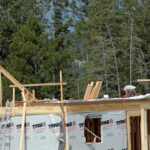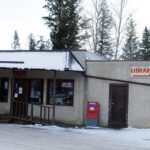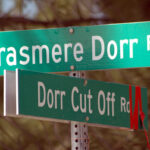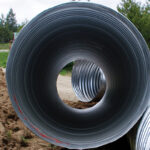Home »

Brewery burn stirred up new brush for sheep, elk
Brewery Ridge, the foothill visible between Fort Steele and Fisher Peak, is flush with new shrub growth two months after its prescribed burn treatment.
Randy Harris, Trench ER Program team leader, visited the site to measure plant growth and soil conditions and the results are good.

“The burn met our objectives,” Harris said. “We’ve had a massive re-sprouting of shrubs, which is what we were aiming for.
“We’ve also had an occurrence of two new shrubs we’ve never seen on site. All are high-value for mule deer, bighorn sheep and elk.”
The ridge, just north of the two-kilometre mark on Wildhorse River Forest Service Road, is key habitat for Rocky Mountain bighorn sheep — the Wildhorse herd, which has been dwindling since a population die-off in 1981. It’s part of a larger area of traditional winter range for sheep.
Steps were taken to reintroduce the bighorns to the area over the years.
“By 1990, the Wildhorse bighorn population had regained to pre-die-off levels,” said Larry Ingham, Project Biologist delivering the work on behalf of the Fish & Wildlife Compensation Program (FWCP).
But populations started to dwindle again. The ridge—historically grassy and shrubby—had become ingrown with trees, which reduced its ability to support ungulates like elk, deer, sheep and cattle.
In 2000, the FWCP commissioned a sheep inventory study of the larger area. In 2005, they released a restoration plan. In 2006, they started to implement that plan.
“Brewery Ridge is our eighth project site,” Ingham said. “There are still some more on the books.”
Brewery and its twin site, Lakit Ridge, are key habitat areas. The Trench ER Program, with funding from FWCP, started to treat these areas in earnest in 2011. Treatments included machine mastication (shredding ingrown trees and leaving the debris on site to break down and be burnt later), hand slashing, fireguard construction, archeological assessment, mapping, and prescribed burning.
The current project is to connect the two ridges with a sheep corridor, a 100-metre wide clearing running 900 metres between the two ridges. Ingham explained the corridor is being hand-slashed by local crews and will run in a straight line up and down the rocky hillsides.
“Bighorns prefer straight, open sightlines,” Ingham said. “We will be removing the lower branches of the larger trees we leave in the corridor to allow for that.”
Total FWCP funding to date at Brewery and Lakit ridges has been $138,000.
Harris is pleased with the results of the treatments and the burn. “The ridge is already providing improved grazing and habitat for our ungulates,” Harris said. “I saw a mother elk and her new calf on site on the day I went out to measure results.”
The Rocky Mountain Trench Ecosystem Restoration Program would like to thank the Fish & Wildlife Compensation Program for its commitment to these sites and the in-kind contribution of labour and expertise from the Wildfire Management Branch.
“We’d like to thank all of our partners for their expertise and contributions,” Harris said. “Brewery Ridge is a great example of the benefits of co-operation and ecosystem restoration.”
Trish Barnes,
Rocky Mountain Trench Ecosystem Restoration Program







